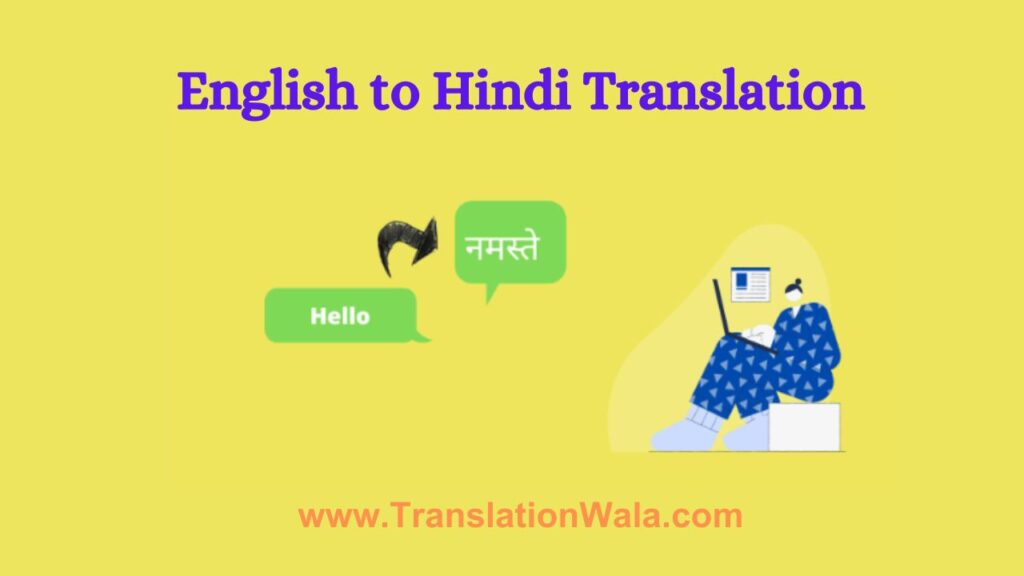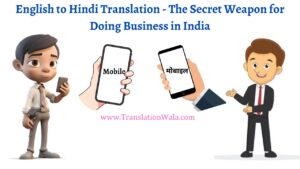India is a huge, open market for businesses of all kinds. It has a rich culture and a diverse population of over 1.4 billion people. But figuring out how to use different languages can be hard. With 22 official languages and more than 120 mother tongues spoken in the country, it takes planning to reach your target audience. English to Hindi translation is very useful in this case because it opens up a lot of possibilities in the Indian market.
Understanding the Power of Hindi:
It is the official language of India and is spoken by more than 528 million people, making it the fourth most common language in the world. It is the common language of North India and is understood by many people in many places. By turning your information into Hindi, you can reach a huge audience, which can lead to:
- Increased Brand Awareness: Indian people really connect with Hindi material, which makes their relationship with your brand better. This builds trust and loyalty, which makes people more likely to remember and choose that brand.
- Improved Marketing Reach: The people you want to reach are more likely to see and interact with marketing efforts, websites, and social media posts in Hindi. This means that more people will buy from you, and your marketing ROI will go up by a lot.
- Enhanced Customer Satisfaction: Giving Hindi-language customer service and product information shows that you care about the Indian market and its many needs. This makes customers happier, keeps them from leaving, and increases the value of each customer over their career.
- Local SEO Optimization: In India, translating your website and other online material into Hindi will help your search engine ranking a lot. This makes your company more obvious to people who are looking for it in Hindi, which increases your online visibility and market reach even more.
Beyond Translation: Cultural Nuances and Context:
Translating from English to Hindi well involves more than just changing words. It’s about knowing the little things, words, and local references that the Indian audience will understand. A good translation will make sure that the content stays true to its original meaning and tone while also changing it to fit the Indian market’s culture. Among these are:
- Using appropriate Hindi dialects: India has a lot of different regional languages, and each one has its own words and ways of pronouncing words. It is very important to choose the right accent for the people you want to talk to.
- Avoiding literal translations: Literal readings in Hindi can sound odd and out of place a lot of the time. A good translator will change the words to fit the natural flow and pace of the language, which will make sure they are clear and have an impact.
- Incorporating cultural references: When you use fun and cultural references, you can connect with your audience on a deeper level and make your brand more approachable.
Also Read: Why English to Odia Translation is Essential for Business Success in India

Strategies for Successful English to Hindi Translation:
To get the most out of translating from English to Hindi, think about these ideas:
- Partner with a reputable translation agency: Pick a translation service that has worked with material meant for the Indian market before. They will have a group of trained translators who know how to translate into Hindi well and understand the subtleties of the language.
- Invest in quality translation: Don’t choose cheap or automatic translation services if you want to get good results. Content that isn’t translated well can hurt your brand’s image and cause confusion.
- Develop a comprehensive translation strategy: To plan your translation efforts, write down your target audience, the types of material you want to translate, and the results you want to achieve.
- Utilize technology: Use translation management systems and other tech tools to make your translation work easier and make sure that all of your content is consistent.
Conclusion:
If you accept English to Hindi translation, you can reach a huge and lively market. This will help your business grow and be successful in India. Don’t forget that changing words isn’t enough. You also need to understand the culture and connect with your audience on a real level. You can get your brand message across to Indian customers, connect with them, and reach your business goals in this exciting and growing market if you spend money on good translation and plan ahead.



